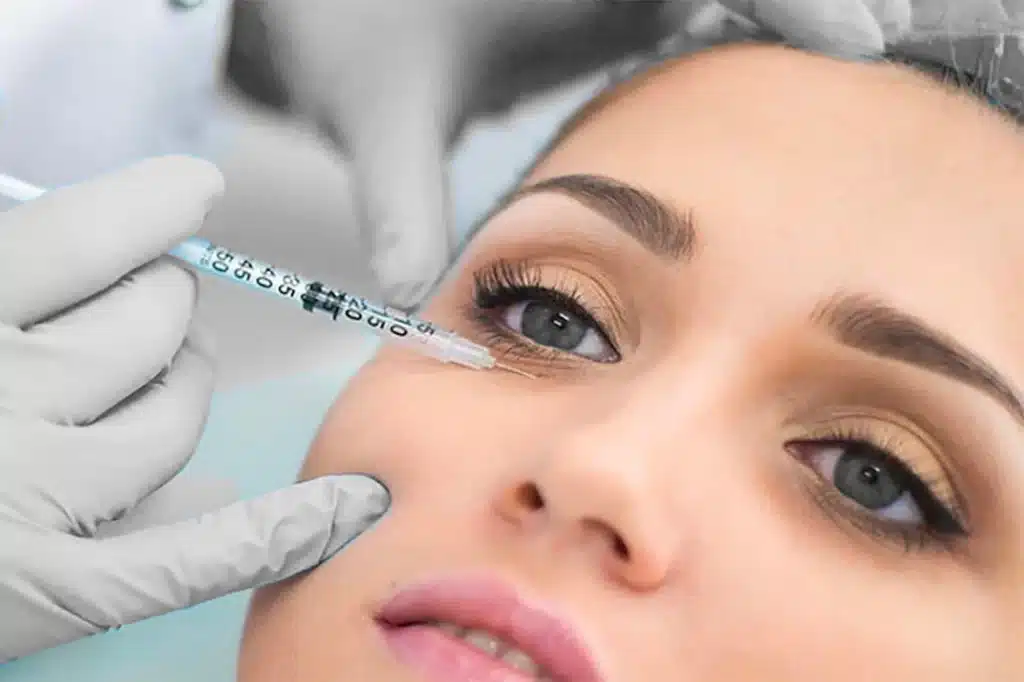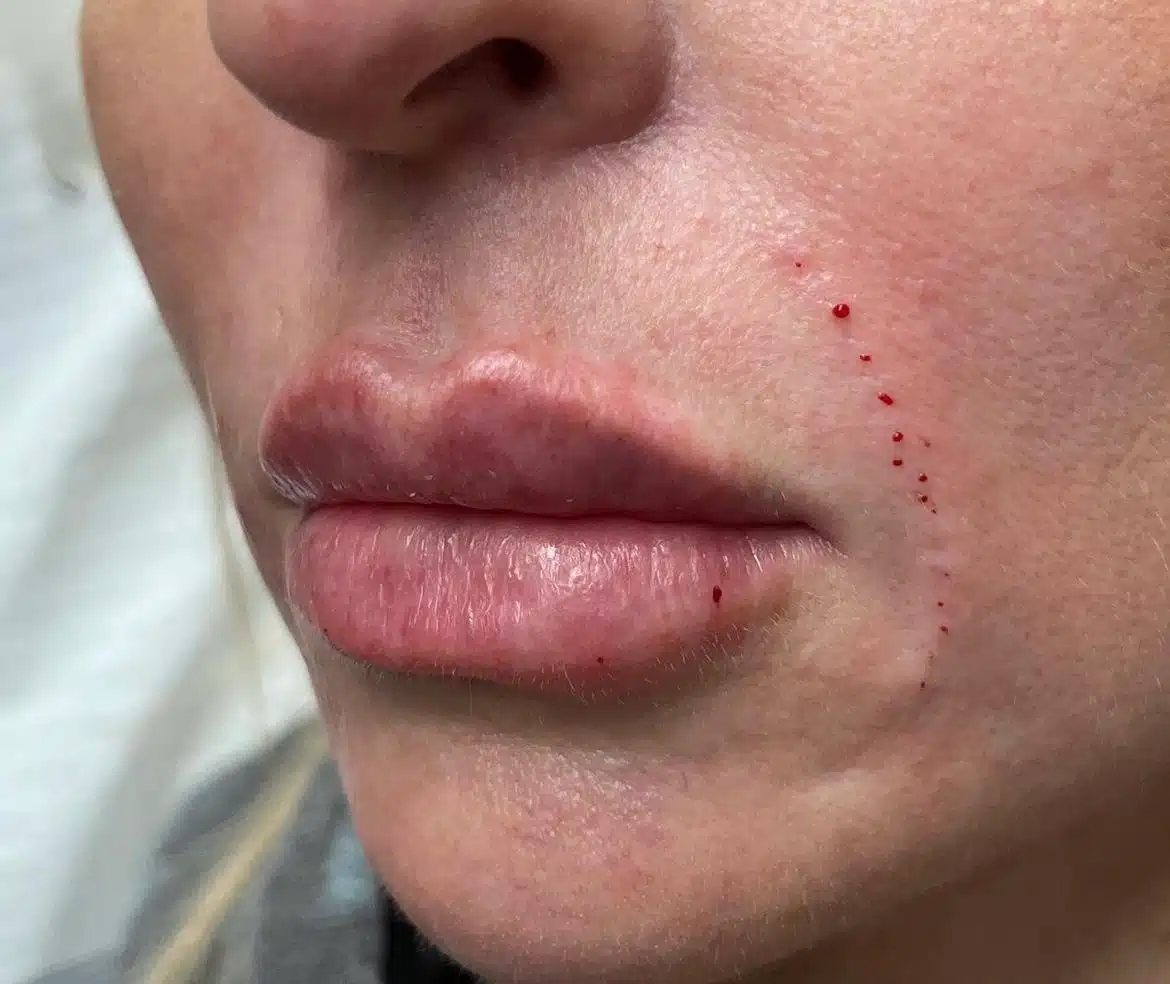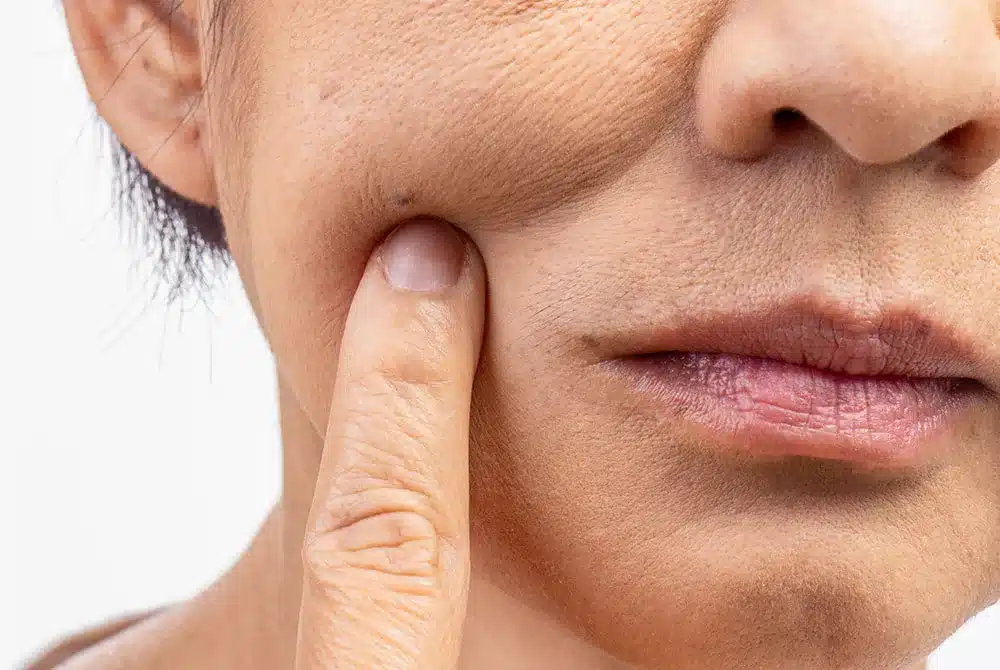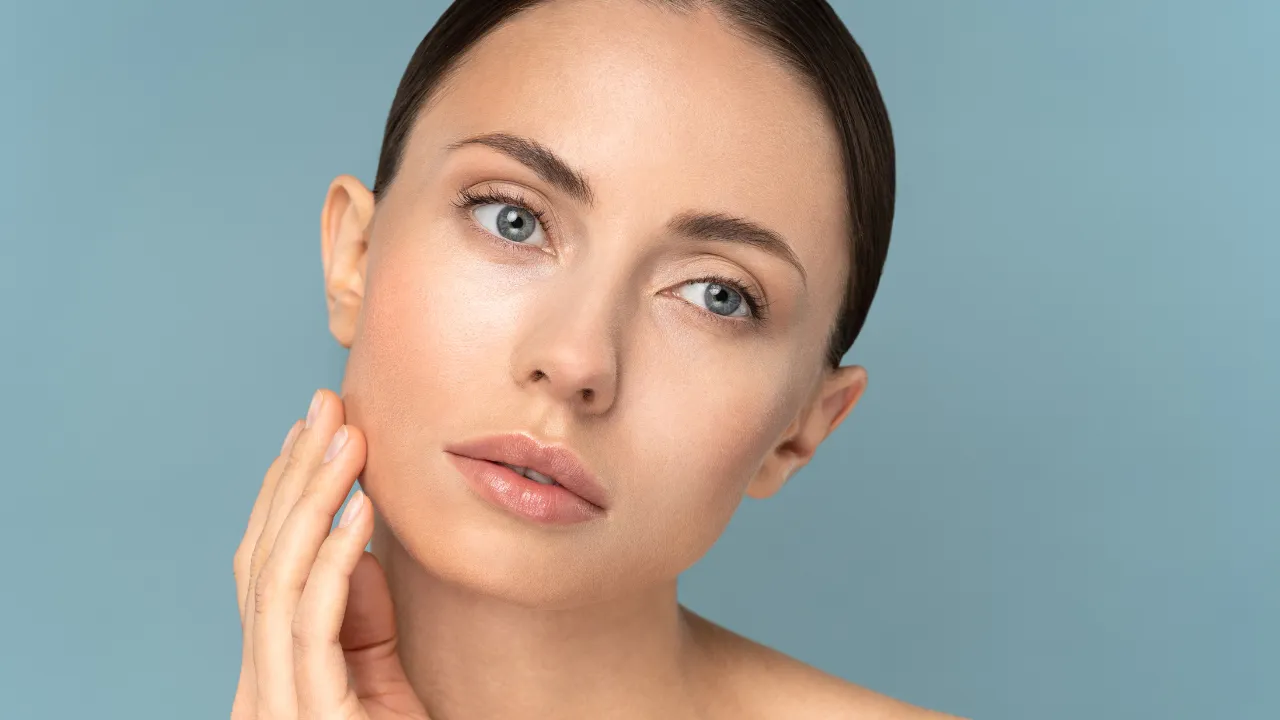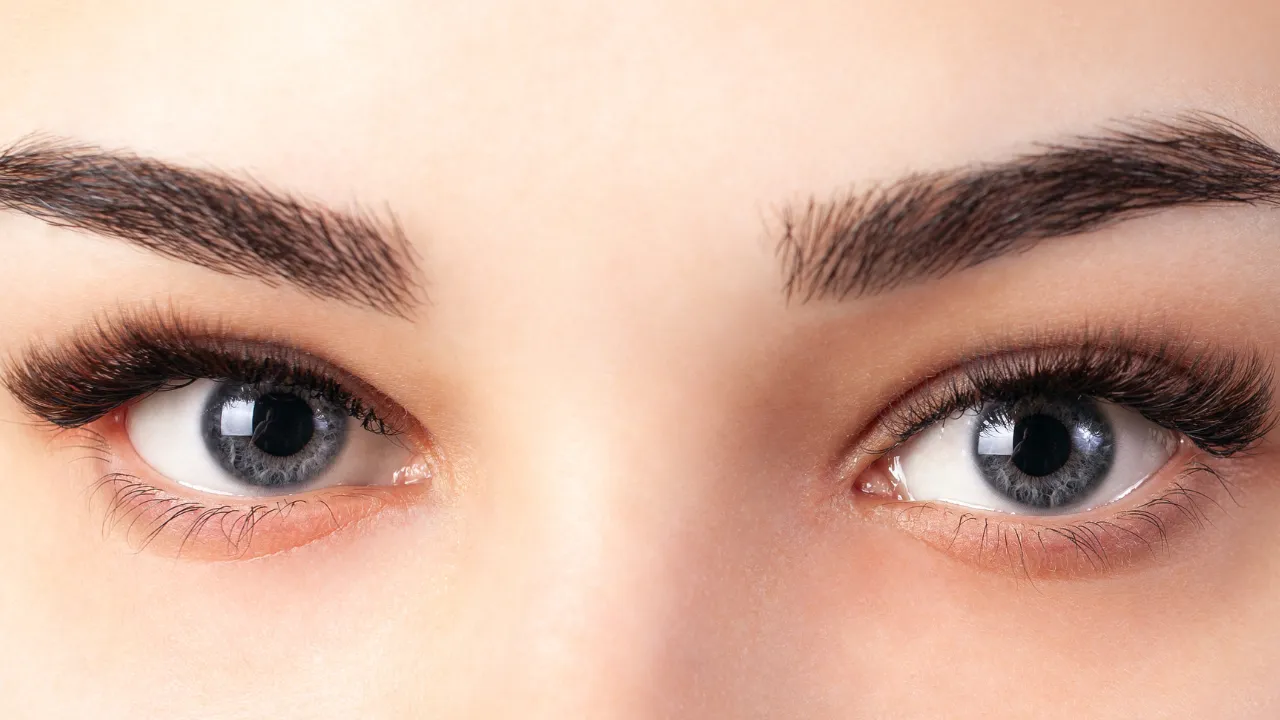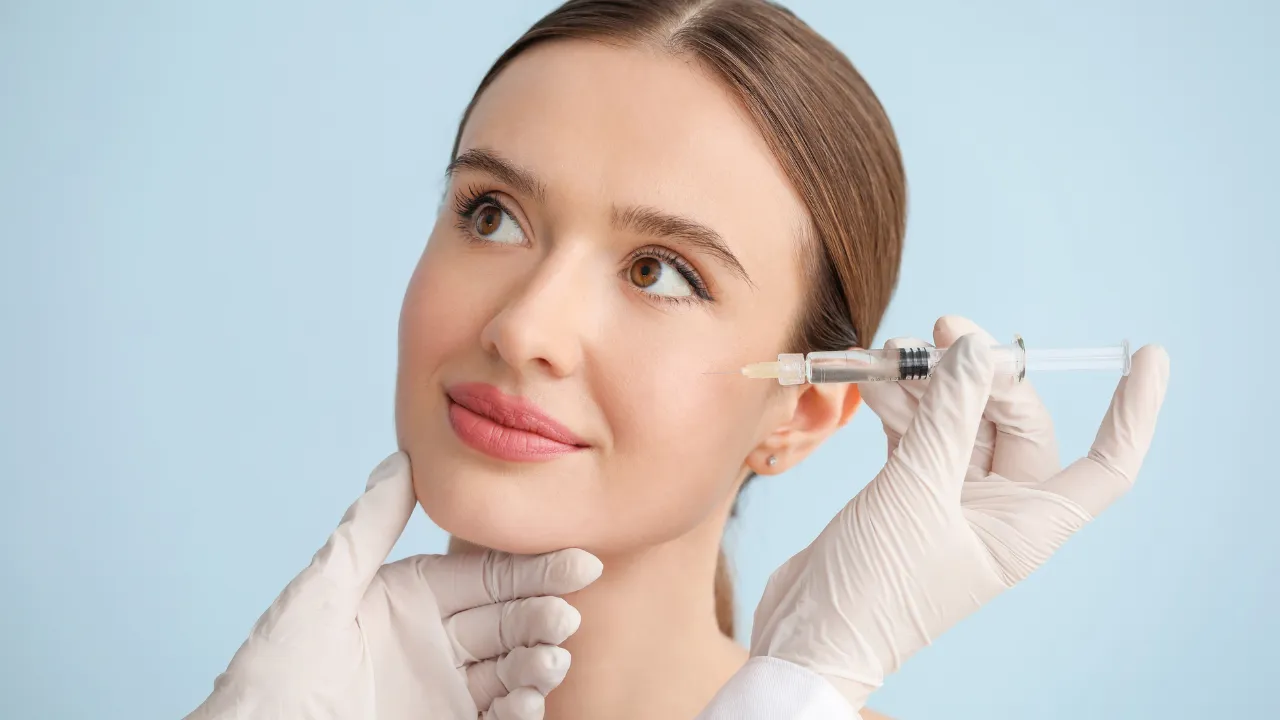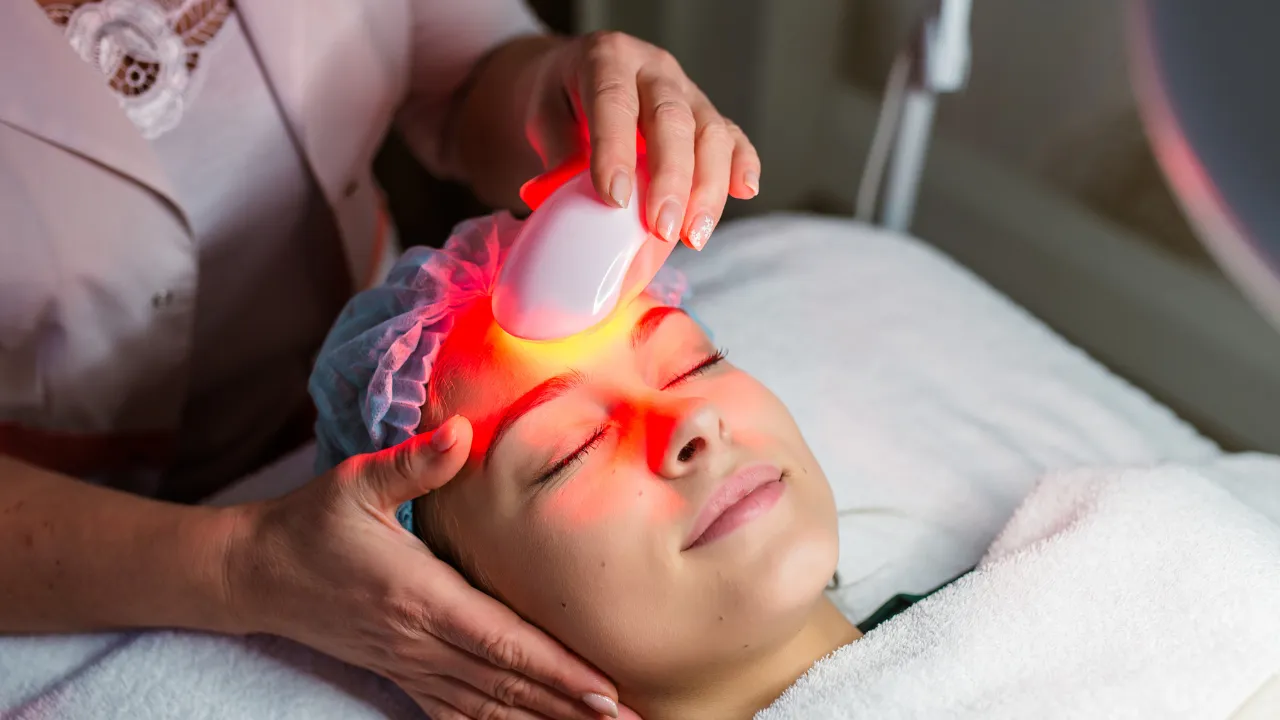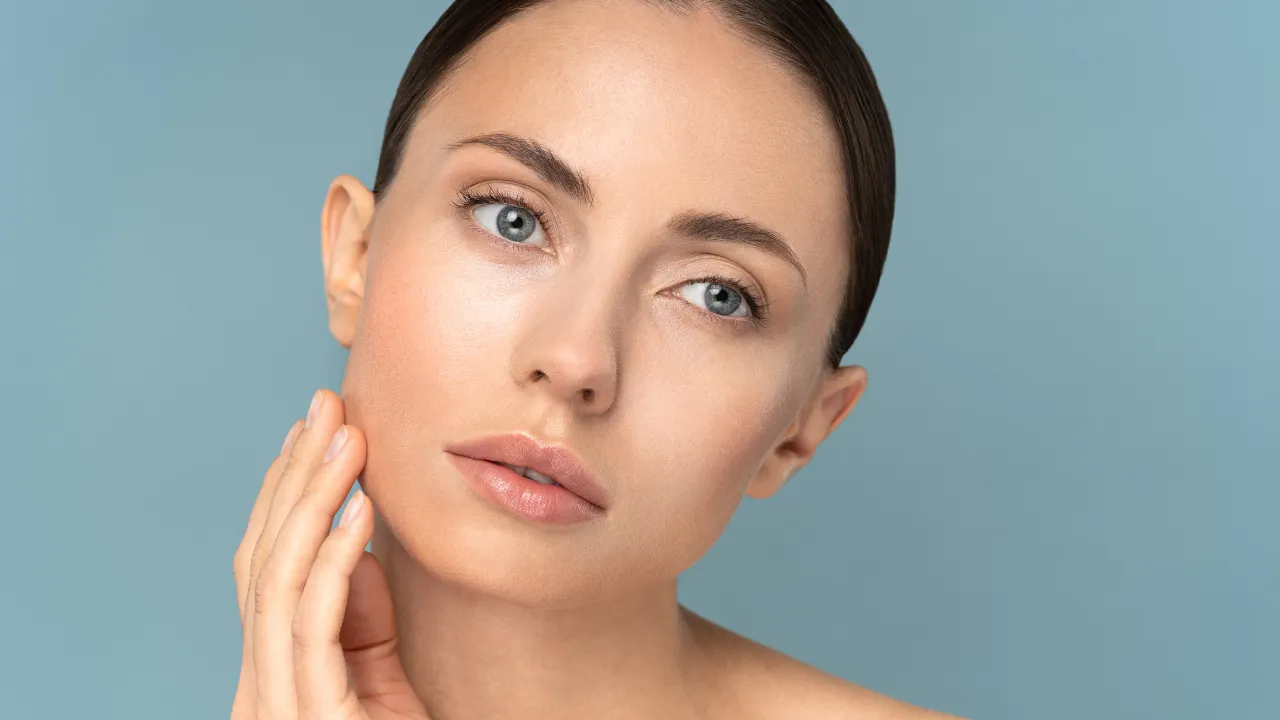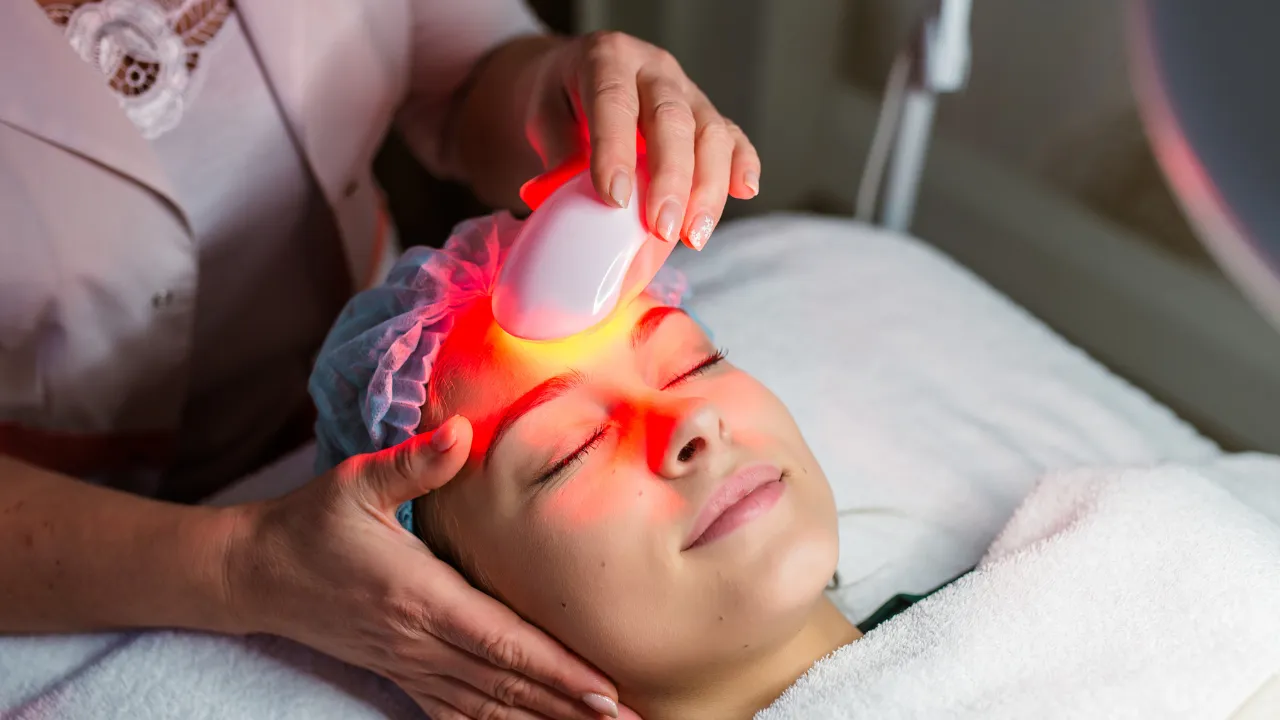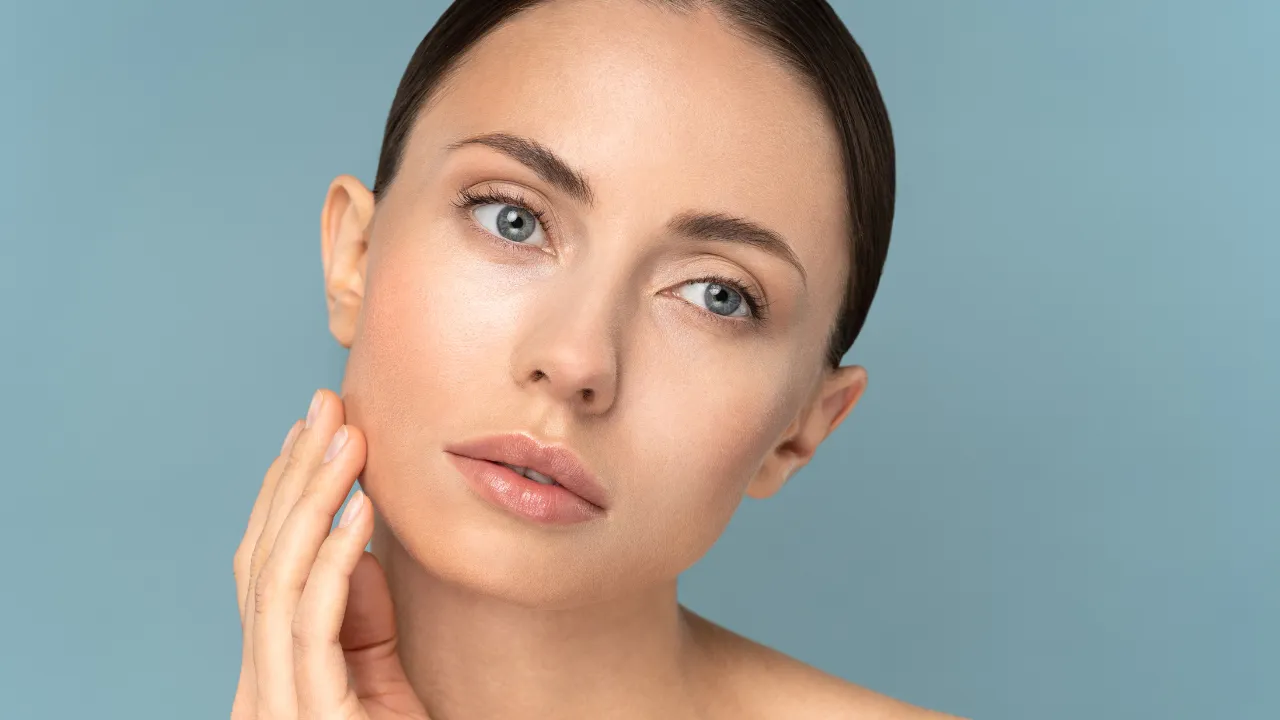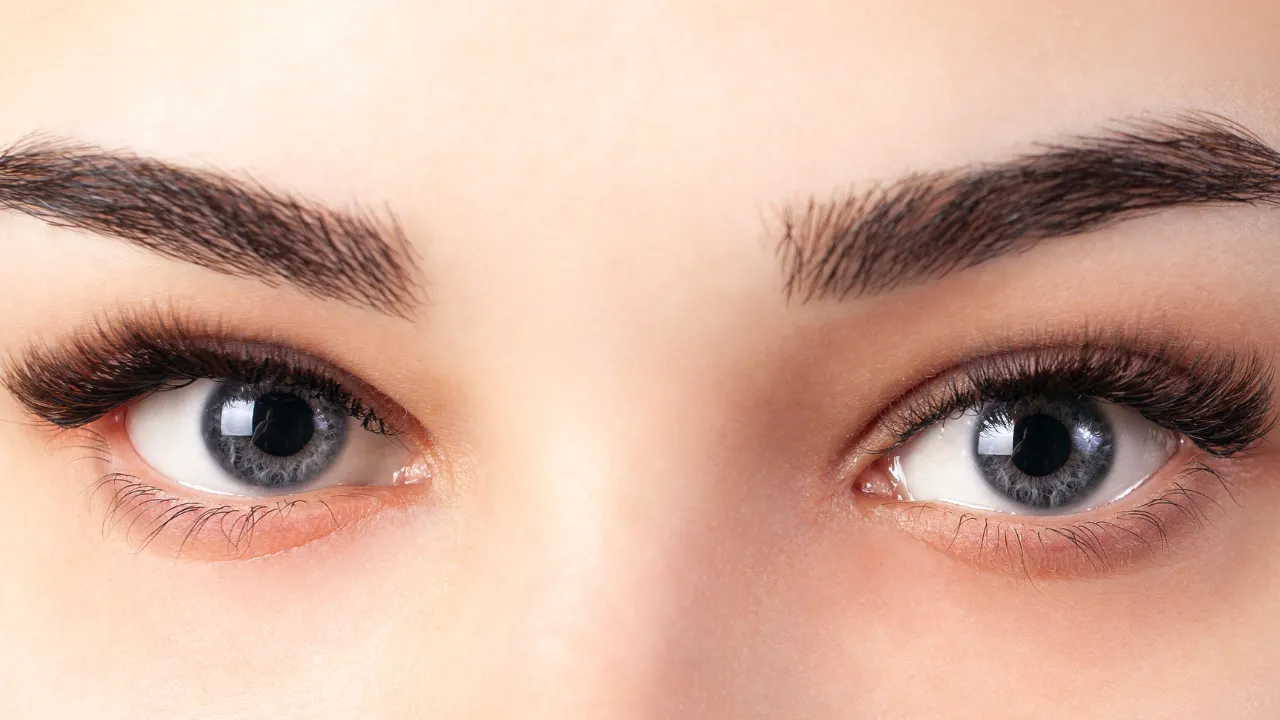Dark circles often form from lost volume, eye hollows, or thin skin under the eyes, and injectables for dark circles can improve these issues quickly. At Kopelman Aesthetic Surgery, Dr. Kopelman uses filler injections and related treatments to lift shadows, smooth contours, and brighten the under-eye area with long-lasting results.
This guide explains how these options work and what patients can expect when considering tear trough filler or other approaches.
Key Takeaways
- Injectables reduce dark circles by restoring lost volume, smoothing eye hollows, and improving the skin under the eyes when structural hollowing is the cause.
- Hyaluronic acid (HA) fillers provide long lasting results for many patients by blending smoothly with the delicate under-eye area.
- Safety depends on correct technique, detailed anatomical knowledge, and choosing a plastic surgeon, board-certified dermatologist, or oculoplastic specialist trained in tear trough filler.
- Costs vary based on the type of filler injection, the degree of hollowing, and the amount of product required to correct eye bags or shadows.
- Alternatives such as lasers, skincare, or combined methods work better when pigmentation or vascular visibility, rather than contour issues, cause discoloration.
What Injections Get Rid of Dark Circles?
Injectable treatments target specific causes of dark circles such as volume loss, hollowing, and visible shadows. These options include hyaluronic acid fillers, dermal fillers for dark circles, skin-quality injectables, and supportive treatments tailored to the patient’s needs. The right choice depends on the anatomy of the under-eye area and the type of shadowing you have.
Some patients see improvement with soft tissue fillers that restore lost volume under the tear trough. Others respond better to injectables that hydrate and smooth thin skin. A careful assessment helps determine which method can reduce shadows and improve brightness using dark circle fillers or similar tools.
How Injectables Fix Under-Eye Shadows
Injectables work by lifting hollow areas where light naturally falls, creating the appearance of a deeper shadow. When volume is restored, the surface becomes smoother and light reflects more evenly. This approach often provides noticeable improvement for patients with structural eye hollows.
These treatments can also soften the transition between the lower eyelid and the cheek. By blending this area, the skin under the eyes looks brighter and more refreshed. Patients dealing with uneven contours often benefit most from this method, especially when filler, including HA gel, is placed with precision.
Causes: Volume Loss, Pigmentation, and Vascular Shadows
Dark circles form for different reasons, and the cause determines the best treatment. Volume loss creates a groove under the eye, deepening shadows. Injectables can correct this by restoring the lost volume beneath the skin under the eyes.
Pigmentation and vascular visibility behave differently. If your dark circles change when you stretch the skin or look upward into bright light, the issue may stem from thin skin or color. These cases may require topical, laser, or combined approaches rather than filler injections alone.
Many patients also wonder whether their concerns stem from inherited traits, and understanding whether dark circles are genetic can help clarify why some individuals experience deeper shadows at an early age.
How Fillers Restore Contour and Brightness
Fillers lift depressed areas beneath the eye, creating a smooth surface that reflects light better. When used carefully, they can soften harsh lines and reduce the sharp contrast that makes circles appear darker. This can create a more rested look even without makeup.
The most common products rely on hyaluronic acid HA because it blends well with surrounding tissue. The material can be shaped precisely, allowing the injector to lift the hollow without adding bulk. This targeted placement is key to natural and balanced results, which is why tear trough filler remains a preferred choice.
Choosing the Right Injectable Treatment
Selecting the correct treatment begins with identifying the root cause of your dark circles. During a consultation, your provider evaluates the tear trough anatomy, skin thickness, and shadowing pattern. This determines whether injectables are appropriate, including whether eye fillers for under-eye circles will provide long-lasting results.
Your goals also matter. Some patients want subtle changes, while others aim for stronger correction. Understanding the best option requires a detailed assessment and an open discussion about results and expectations.
Types of Fillers for Dark Circles
Several filler types can be used in the under-eye region, each providing unique benefits. Hyaluronic acid fillers remain the most popular due to their flexibility and safety. They allow precise shaping and can be dissolved if needed.
Other filler materials may be used in select cases when extra support or firmness is required. These options tend to last longer but require greater experience to place safely. Most patients still prefer hyaluronic acid for its balance of lift and softness.
Who Is a Good Candidate?
Good candidates are people whose dark circles come from volume loss or hollowing rather than only pigmentation. If your under-eye appearance improves when the area is gently lifted, fillers may help. Patients with stable health and realistic expectations often see the best outcomes.
Someone with heavy eye bags or very loose skin may not be ideal for filler alone. In those cases, surgical or combined approaches offer better improvement. Discussing your goals with an experienced injector helps determine which path is safest and most effective.
Are Fillers for Dark Circles Safe?
Safety depends on product selection, proper injection technique, and anatomical expertise. The under-eye area contains sensitive structures, so choosing a trained specialist is essential. Dr. Kopelman’s background in facial and oculoplastic surgery supports safe treatment planning.
Common concerns include swelling, unevenness, or sensitivity during the initial healing period. Rare complications can occur if filler enters a blood vessel, which is why careful technique and a detailed understanding of eyelid anatomy are critical. Some patients may experience the Tyndall effect if filler is placed too superficially, making expert placement essential.
Injections for Dark Circles Near Me
People often search for providers close to home when exploring treatment options. Choosing a practice with proven experience in this delicate area is more important than convenience alone. A qualified specialist can evaluate your needs and recommend the right approach.
Patients in New York City often seek a provider who offers customized plans rather than a one-size-fits-all approach. Kopelman Aesthetic Surgery focuses on personalized evaluation and long-term results, which helps support safety and patient satisfaction.
Under-Eye Fillers Side Effects
Side effects may include mild bruising, swelling, or temporary unevenness. These usually resolve within days as the filler settles. Most patients can return to normal activity soon after treatment. Those preparing for treatment often review details about under-eye filler recovery to better understand expected healing timelines and activity restrictions.
Rare risks include persistent puffiness, delayed swelling, or visible filler beneath the skin. Choosing a hyaluronic acid product helps reduce long-term concerns because it can be adjusted or dissolved if needed. Careful placement reduces the chance of irregularities.
Injection for Dark Circles Cost
Under-eye filler injections typically cost $1,200 to $1,500 at most practices. Costs vary depending on the amount of filler needed, the type of product used, and the injector’s skill level. In major cities, pricing may also reflect local demand and practice expertise. Most treatments fall within a range that reflects product quality and provider experience.
Patients should focus on results and safety rather than the lowest available price. Under-eye injections require high precision and correct product selection. An expert approach offers better value over time by reducing the need for corrections.
Which Is the Best Treatment for Dark Circles?
The best treatment depends on the cause of your dark circles. Fillers work well for volume loss or hollowing, but pigmentation or vascular visibility may require other methods. Combining approaches often produces the most balanced improvement.
People dealing with mixed causes should consider a plan that includes injectables, skincare, and energy-based treatments. The goal is to match each solution to the underlying issue rather than relying on a single method.
Some patients also ask about at-home solutions, and choosing the best eye cream for dark circles can support long-term maintenance between professional treatments.
Before-and-After Results: What to Expect
Many patients notice improvement immediately after treatment because the filler lifts hollow areas. As swelling fades, the result becomes smoother and more natural. This process continues over several weeks as the product settles fully.
Most hyaluronic acid fillers last several months to over a year. Longevity depends on metabolism, lifestyle, and the specific filler used. Your provider will guide you on maintenance visits to keep results stable and support long-lasting results.
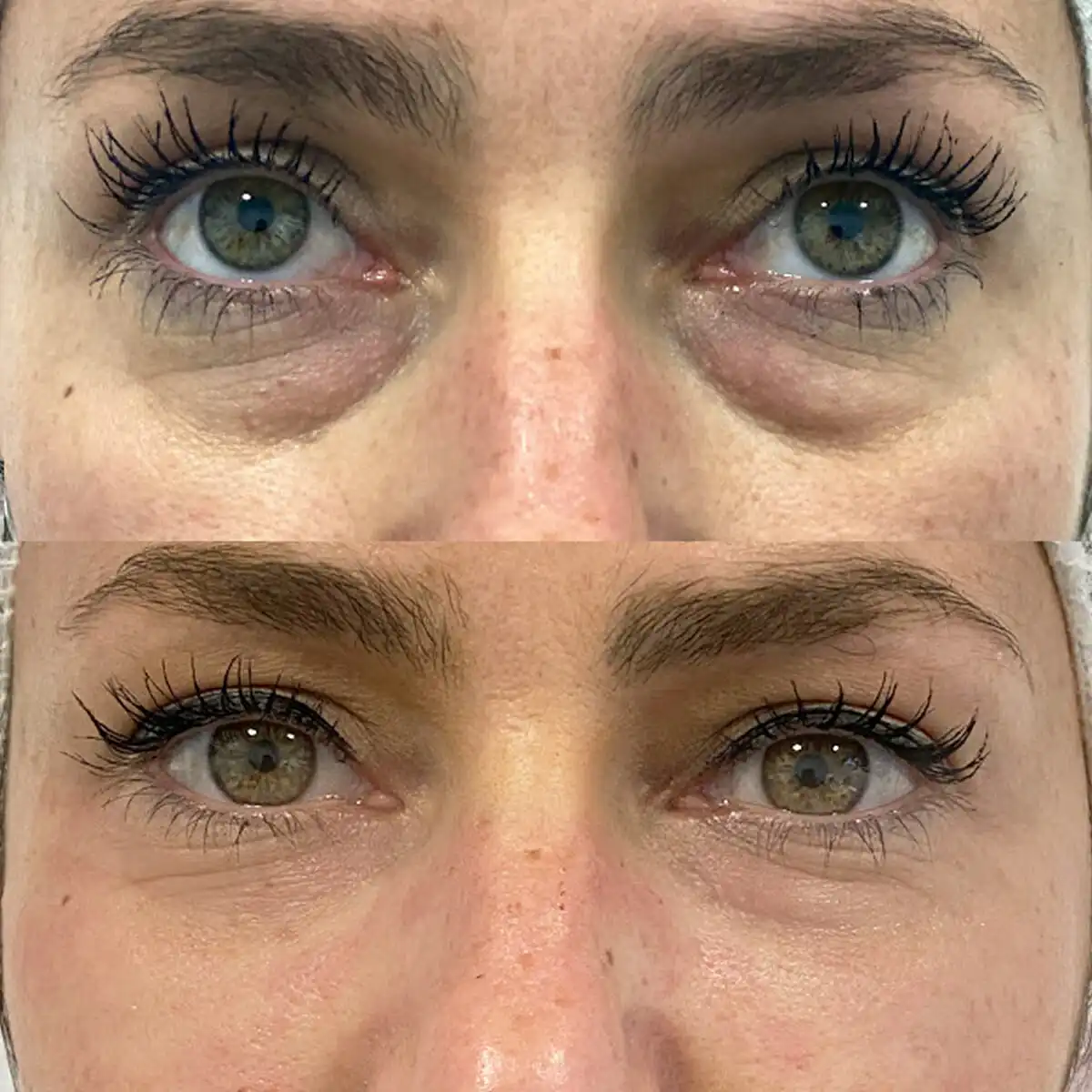
Patients often review under-eye filler before and after photos to visualize realistic improvements and set clear expectations for their own outcomes.
Alternatives When Injectables Aren’t the Best Fit
Some patients cannot achieve their goals with injectables alone, especially when pigmentation or loose skin is the main concern. In these cases, non-injectable treatments can support a brighter appearance. A balanced plan often leads to the most natural result.
A combined strategy can also help patients who have been unhappy with past filler treatments. Clear communication and a thorough exam help determine which method offers the greatest benefit. Many people use alternatives as part of long-term maintenance.
When Pigmentation or Vascular Shadows Are the Issue
If your dark circles do not improve when the area is lifted, pigment or vascular visibility may be the root cause. Topical treatments, peels, and energy-based devices often improve these concerns more effectively than fillers. They target the skin surface and color directly.
Vascular darkness may require treatments that reduce vessel visibility or strengthen thin skin. These options brighten the area by addressing the color rather than the contour. Your provider will assess which factor plays the strongest role in your case.
Lasers can target pigmentation or improve skin texture, depending on the device used. These options work well for patients with discoloration or fine lines. They can be performed alone or combined with filler for more complete improvement.
Your Next Step
If you’re ready to address dark circles safely and confidently, schedule a consultation at Kopelman Aesthetic Surgery. Dr. Kopelman will evaluate your needs, explain your treatment options, and create a personalized plan to help you achieve a brighter and more rested look.

